Hebrew: צפורני-חתול מצויות, Arabic: أزريون, Egypt: ع̛ن البقر "'Ain El-Baqar"
| Scientific name: | Calendula arvensis L. | |
| Synonym name: | Calendula aegyptiaca auct.p.p. non Pers. | |
| Common name: | Field Marigold | |
| Hebrew name: | צפורני-חתול מצויות | |
| Arabic name: | أزريون | |
| Egypt: | ع̛ن البقر "'Ain El-Baqar" | |
| Family: | Compositae (Asteraceae), מורכבים |
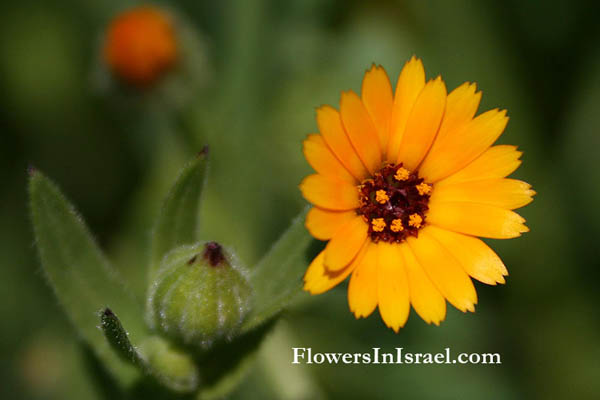
|
| Life form: | Annual | |
| Stems: | 30- 60 cm high; Erect or decumbent | |
| Leaves: | Alternate, oblong-lanceilate, toothed or edge unbroken, hairy below | |
| Flowers: | Yellow | |
| Fruits / pods: | Very distinctive nut-like fruits, half-moon or ring-shaped | |
| Flowering Period: | January, February, March, April, December | |
| Habitat: | Batha, Phrygana, Shrub-steppes, Desert | |
| Distribution: | Mediterranean Woodlands and Shrublands, Semi-steppe shrublands, Shrub-steppes, Deserts and extreme deserts, Montane vegetation of Mt. Hermon | |
| Chorotype: | Med - Irano-Turanian | |
| Summer shedding: | Ephemeral |
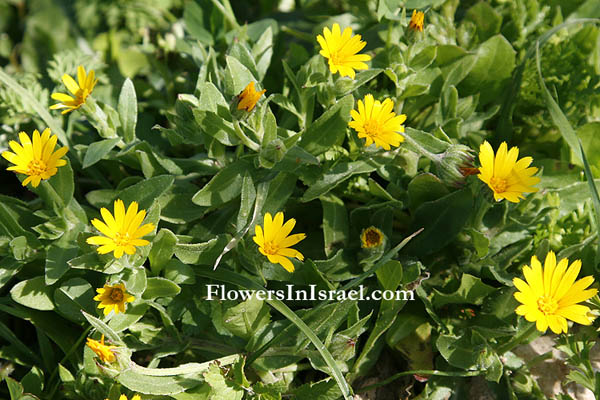
Derivation of the botanical name: Calendula,from the Latin kalendae, "first day of the month" in the Roman calendar, since they can be found in flower at the beginning of most months of the year. arvensis, arvum, field, cultivated land, plowed land; ensis, country or place of origin or habitat; of cultivated fields. Marigold, refers to its link with the Virgin Mary. The Hebrew name: צפרני-החתול, tsiporne-chatul, cat’s claws, for the fruit looks like a cat’s paw with drawn claws.
Alire Raffeneau Delile (1778 - 1850), a French botanist, found the Calendula arvensis growing spontaneously around Cairo; and the Calendula officinalis, in gardens at Alexandria. Calendula arvense seems to have therapeutic properties. It is antiseptic. Some constituents are antifungal, antibacterial, and antiviral. 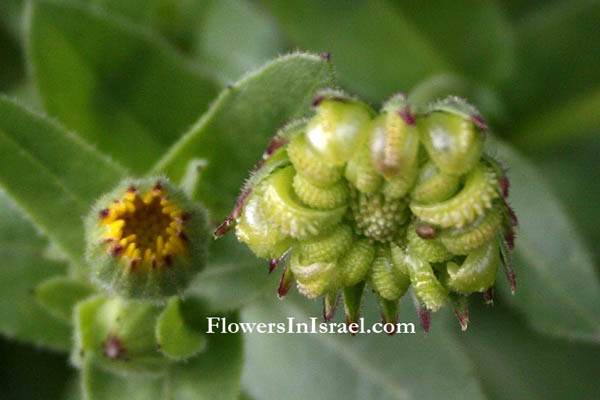
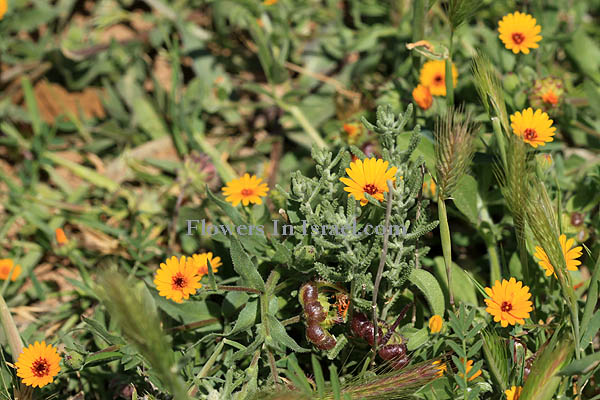
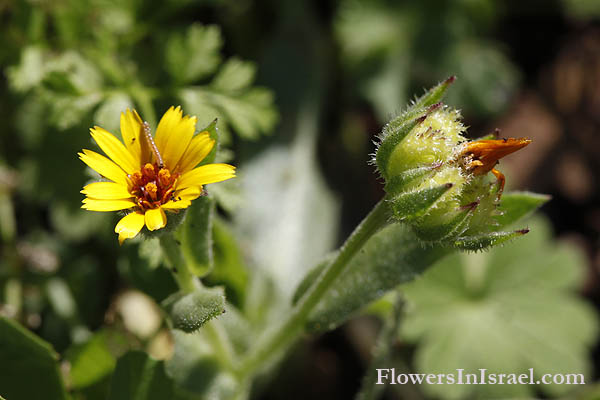
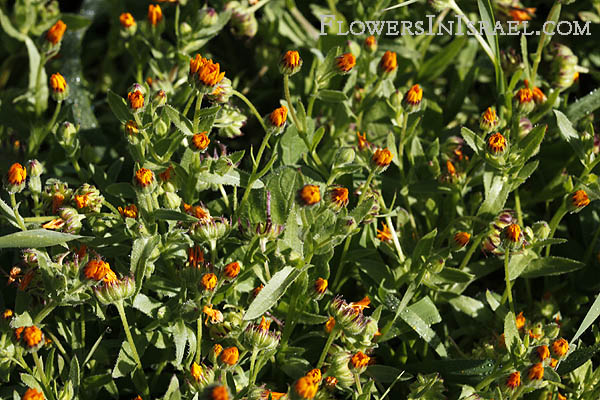
|